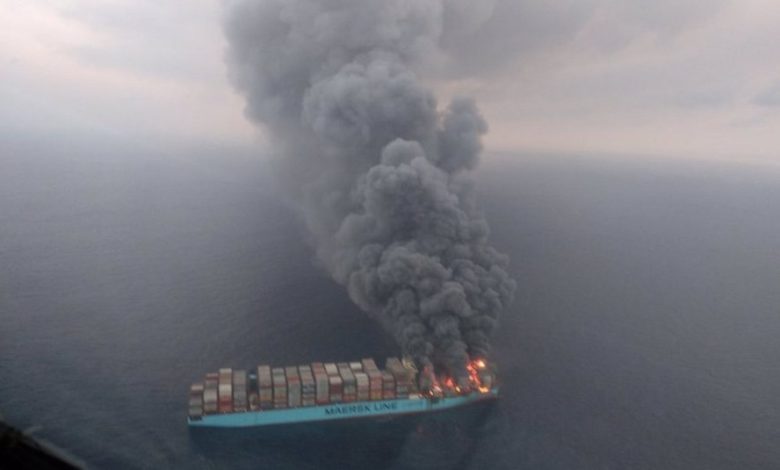Maersk starts random box checks in latest bid to stamp out scourge of misdeclared cargoes

In a bid to stamp out misdeclared cargoes, Maersk has started carrying out random container checks in North America. This is the latest measure by the Danish carrier as it attempts to find solutions to the spate of fires that have broken out on boxships in recent years, including its own 15,000 teu Maersk Honam last year, which resulted in the loss of five lives.
Maersk’s physical container inspection pilot is currently performing inspections for import and export cargo into the ports of Newark Berth 88, Houston Bayport, Miami Pomtoc and New Orleans Ceres terminals.
The randomly selected containers are being inspected by National Cargo Bureau, and the cost for this inspection will be paid for by Maersk. If a container is discovered to be inadequately stuffed, lashed, and secured, or found to contain mismatching cargo compared to the given declaration, shippers could face paying a higher bill.
The data collected through this pilot may be used to develop procedures that better ensure the accuracy of cargo descriptions provided to Maersk, as well as improve the use of the Code of Practice for Packing of Cargo Transport Units (CTU Code), the company stated in a release.
“Maersk and other carriers in the industry are working to improve safety and reliability in the Containerized Maritime Supply Chain, by verifying that cargo descriptions match actual contents of the container, and that the contents of the container are correctly stuffed, lashed and secured,” Maersk stated in a note to clients.
Earlier this month a fire broke out on Hapag-Lloyd’s 7,500 teu Yantian Express and while no investigation has yet been possible, the case looks like another incident of a client failing to declare its cargo properly.
In the wake of last March’s fire on the Maersk Honam and another one which erupted in a container in the Maersk Kensington in the same month, the Danish liner has been working hard to make changes to how it carries dangerous goods, introducing last September a new set of principles called Risk Based Dangerous Goods Stowage.
Cargo covered under the International Maritime Dangerous Goods Code is now no longer stowed next to any Maersk ship’s accommodation and main propulsion plant which is defined as the zone with the lowest risk tolerance.
Statistics from insurer TT Club published this week show two thirds of incidents related to cargo damage in the intermodal supply chain can be attributed in part to poor practice in the overall packing process, including not just load distribution and cargo securing, but also the workflow from classification and documentation through to declaration and effective data transfer.

Congratulations to Maersk for going that extra mile to enhance safety and seek the truth. All IMO and statutory Maritime regulations including the IMDG code itself point to poor Master /Ship for identifying & correcting everything what is going wrong in the transportation which is shifted from Ocean transportation to Logistics operations from Shipper’s factory to consignee’s warehouse and carrier relying on the shipper’s integrity. Regulations have become more specifics for every identified hazardous cargo but didn’t help in achieving objective of enhancing safety. Mainly because the Merchant/shipper have been having luxury of being indifferent to accidents on board. The threat of being held responsible for misdeclaration, wrong stowage and that carrier would be absolved of it’s responsibility in case of loss/damage is too mild a deterrent to be effective . It doesn’t even raise an alert for someone responsible in his office overseeing the pre shipment checks. No matter what happens to a shipment , I can always have another carrier for my next shipment is the confidence every shipper has.
IMO amending or bringing new regulations is proved of no use . It’s very painful to note that the responsibility and burden for safe transportation is left solely on the Carrier and the seafarers sailing onboard those ships! In reality neither the Carrier nor the Master on board has a role in packaging of the cargo, port handling procedures, or documentation in respect of the transport involved. Regulations and expectations from them are disproportionate which results in those being culpable actually stand aside while responsibility is sought to be fixed from one carrier to another while business goes on.
A mechanism which will lead to better allocation of responsibility without the carrier or the seafarer being always held responsible is necessary. IMO members states should have regulations that would ensure that, appropriate national laws are in place which will have deterrent measures so that culprits are made to suffer and do not escape and continue business with indifferent attitude.